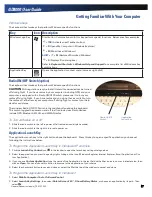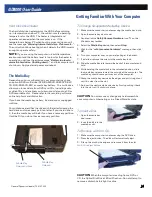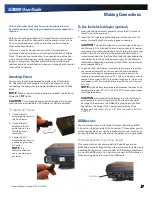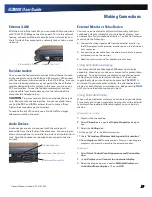
General Dynamics Itronix | 72-0137-003
GD8000 User Guide
Wireless Communication
Improving Radio Coverage
Radio connectivity between your computer and your wireless
network may vary at different times of the day and in different
types of weather. It may also be influence by terrain, buildings
or even a crowded room. Follow these tips to improve radio
coverage between your computer and your wireless network,
depending on your location.
On the Street
Try all sides of a building to see which side provides the
strongest radio signal.
Move from under trees. Pine needles absorb radio signals more
than leaves.
Move away from overhead electrical wires.
Move away from buildings. Radio signals reflect off other
buildings.
Try not to hold the unit. If possible, place it in vehicle, on a
cabinet or desk.
If holding the unit, turn the unit in 90-degree increments to avoid
shielding it with your body.
Move several feet in any direction if needed for a stronger signal
since the signal is 1-2 feet across.
Inside a Building
Move toward windows.
Move above ground. Signals do not penetrate the ground so
there will probably be no signal in basements.
Try the side of the building that is least likely to have coated
windows. Reflective coatings on windows reflect radio signals.
Open blinds. Closed metal blinds can reflect radio signals.
Try different rooms. Dropped ceilings sometimes hide an
accumulation of electrical cable.
Avoid sources of Electromagnetic Interference (EMI).
Electromagnetic Interference (EMI) is generated by switching
circuitry closets or Un-interruptable Power Source (UPS) systems
found near computer rooms and can block the radio signal.
When to use Landline Communication
If these tips do not improve radio signal strength, switch to
landline communication. Switching to landline communication
is faster than searching for and trying to improve the radio signal.
















































